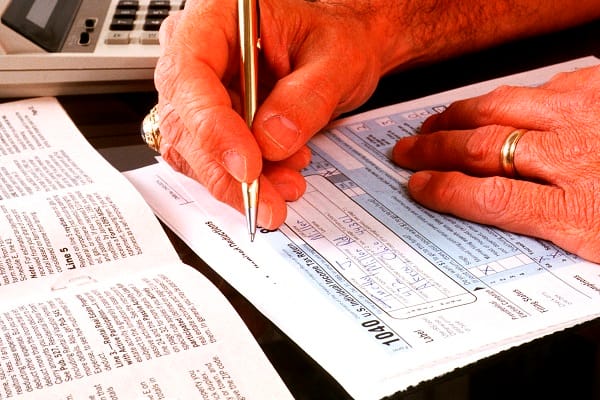HMRC has recently announced several “simplifications” to reduce the number of taxpayers that are asked to file a Self Assessment Tax Return.
There are clear benefits for HMRC from taking taxpayers out of Self Assessment, but what do these changes mean for the individuals affected, and their professional advisors? Will it become easier to determine and pay the correct tax liability?
APARI Pro, leading providers of an innovative, AI-powered, and HMRC-recognised tax return software, have commented on these changes, considering the contributing factors towards this changing tax environment and what this update means for the future of Self-Assessment taxation.
What do the changes entail?
From the 2023/24 tax year onwards, the Self Assessment threshold for individuals taxed only through PAYE will rise to £150,000. So, earning between £100k – 150k from employment will no longer create an automatic requirement to complete a tax return. HMRC will issue a Self Assessment exit letter to affected taxpayers before tax returns for 2023-24 are due.
This change was first announced in the Agent Update in May 2023. To be clear, this does not impact the 22/23 year, so the tax returns being completed right now are not affected.
Also, in future, taxpayers will no longer be required to register for Self Assessment solely to pay the High Income Child Benefit Charge, which affects parents that earn over £50,000. This change was announced on 18 July 2023 in a Written Ministerial Statement, with further details to follow.
To get certainty, taxpayers can utilise HMRC’s online tool for determining whether they are required to submit a tax return once it is updated for 2023-24.
What are the main reasons behind the latest changes in Self-Assessment taxation?
As stated in a recent consultation on simplifiying and modernising Income Tax services, “The work around the annual filing date is HMRC’s single biggest business event of the year. Any issues that cause taxpayers to contact us require significant HMRC resource…”
There are various societal factors that have pushed more and more individuals to go self-employed, such as the 866 thousand people who became self-employed in 2021-22, after the start of the Covid-19 pandemic. This has meant that more individuals across the UK are now required to complete Self Assessment returns.
In addition to this, there have also been freezes in the tax thresholds, which means that as people’s income has been going up, more people are being moved into higher tax brackets and therefore seeing more opportunities to get tax reliefs and find tax efficiencies.
Finally, with high inflation leading to interest rate rises and higher cash returns on investments, more individuals than ever will be dragged into Self Assessment to declare this information.
With this increase of individuals in the system, HMRC has accelerated its efforts to remove some from the Self Assessment system as mitigation of their increasing workload.
The continuing pressure on HMRC’s resources
On May 12th, Jim Harra, the Chief Executive and First Permanent Secretary of HMRC, communicated straightforwardly with the Public Accounts Committee, stating that its current resource levels are insufficient to cope with the projected surge in demand for its phone and post services, which is expected to escalate substantially.
“It’s well document that HMRC is struggling to cope with the high volume of contact and enquiries it gets,” began Anish Mehta, Chief Product Officer at APARI Pro.
“Given the fact that over half a million tax returns were submitted by accountants on the deadline day, resulting in last minute stress, taking people out of the system is, understandably, in HMRC’s best interests – 12m individuals do tax returns today, but trends are dragging more people in.”
But Self Assessment remains the most straightforward way of claiming higher rate relief on pension contributions or charitable donations, especially for accountants and bookkeepers acting for their clients.
“As an individual that has already been doing their own tax return for many years, you may want to stay in control of your financial affairs so you can avoid the loss of personal allowance and valuable benefits such as Tax Free Childcare.” explained Anish.
“As an accountant, if you’ve got clients already in Self Assessment and HMRC says to take them out and handle all their taxes correctly through their tax code and Personal Tax Account, we already know this is prone to failure, and you might want to keep your clients in Self Assessment for good reasons.”
There will still be a need to have ongoing information about factors such as pension contributions throughout the year, so that you can advise your clients about how to be as tax efficient as possible.
“Legitimately, there are still advantages to using Self Assessment software, such as telling you where you are financially and giving you real-time oversight on your tax liability” expressed Sudesh Sud, co-founder and CEO of APARI Pro.
The role of software innovation in the evolving world of Self-Assessment taxation
Innovation in the software market has meant that there is more tech available for individuals – a lot of technology previously has been about businesses, but now, technology is available for you to have smart and informed conversations with your advisor that didn’t exist a few years ago.
“Whilst these announcements are trying to change the mechanism by which people submit their tax returns, the real value accountants add is by helping people to be tax efficient – this doesn’t really change,” began Anish.
“This is where technology and software can help you to have intelligent conversations with your clients throughout the year to ensure they’re in the best tax efficient position.”






Leave a Comment